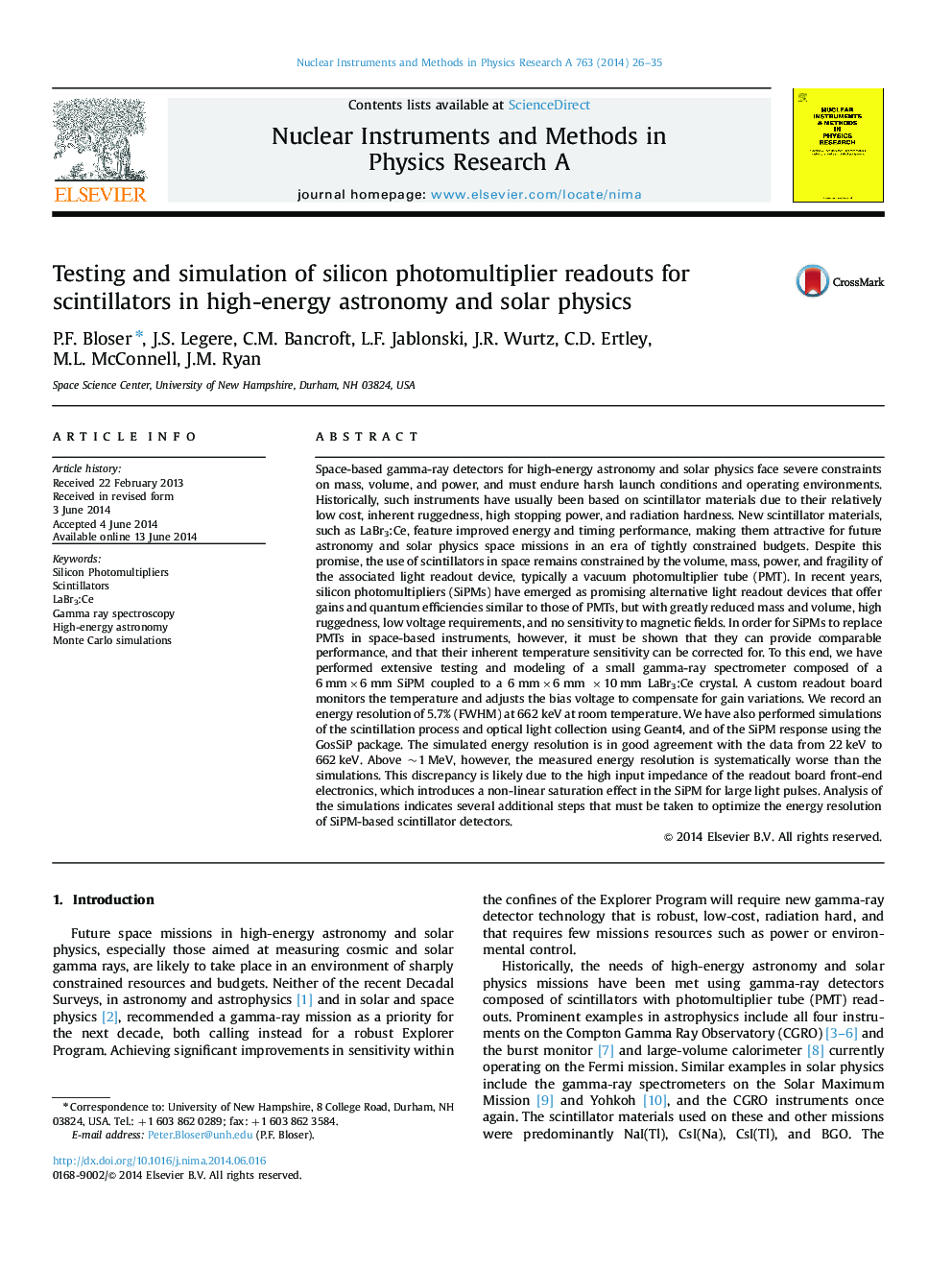| کد مقاله | کد نشریه | سال انتشار | مقاله انگلیسی | نسخه تمام متن |
|---|---|---|---|---|
| 8175905 | 1526363 | 2014 | 10 صفحه PDF | دانلود رایگان |
عنوان انگلیسی مقاله ISI
Testing and simulation of silicon photomultiplier readouts for scintillators in high-energy astronomy and solar physics
دانلود مقاله + سفارش ترجمه
دانلود مقاله ISI انگلیسی
رایگان برای ایرانیان
کلمات کلیدی
موضوعات مرتبط
مهندسی و علوم پایه
فیزیک و نجوم
ابزار دقیق
پیش نمایش صفحه اول مقاله

چکیده انگلیسی
Space-based gamma-ray detectors for high-energy astronomy and solar physics face severe constraints on mass, volume, and power, and must endure harsh launch conditions and operating environments. Historically, such instruments have usually been based on scintillator materials due to their relatively low cost, inherent ruggedness, high stopping power, and radiation hardness. New scintillator materials, such as LaBr3:Ce, feature improved energy and timing performance, making them attractive for future astronomy and solar physics space missions in an era of tightly constrained budgets. Despite this promise, the use of scintillators in space remains constrained by the volume, mass, power, and fragility of the associated light readout device, typically a vacuum photomultiplier tube (PMT). In recent years, silicon photomultipliers (SiPMs) have emerged as promising alternative light readout devices that offer gains and quantum efficiencies similar to those of PMTs, but with greatly reduced mass and volume, high ruggedness, low voltage requirements, and no sensitivity to magnetic fields. In order for SiPMs to replace PMTs in space-based instruments, however, it must be shown that they can provide comparable performance, and that their inherent temperature sensitivity can be corrected for. To this end, we have performed extensive testing and modeling of a small gamma-ray spectrometer composed of a 6Â mmÃ6Â mm SiPM coupled to a 6Â mmÃ6Â mm Ã10Â mm LaBr3:Ce crystal. A custom readout board monitors the temperature and adjusts the bias voltage to compensate for gain variations. We record an energy resolution of 5.7% (FWHM) at 662Â keV at room temperature. We have also performed simulations of the scintillation process and optical light collection using Geant4, and of the SiPM response using the GosSiP package. The simulated energy resolution is in good agreement with the data from 22Â keV to 662Â keV. Above ~1Â MeV, however, the measured energy resolution is systematically worse than the simulations. This discrepancy is likely due to the high input impedance of the readout board front-end electronics, which introduces a non-linear saturation effect in the SiPM for large light pulses. Analysis of the simulations indicates several additional steps that must be taken to optimize the energy resolution of SiPM-based scintillator detectors.
ناشر
Database: Elsevier - ScienceDirect (ساینس دایرکت)
Journal: Nuclear Instruments and Methods in Physics Research Section A: Accelerators, Spectrometers, Detectors and Associated Equipment - Volume 763, 1 November 2014, Pages 26-35
Journal: Nuclear Instruments and Methods in Physics Research Section A: Accelerators, Spectrometers, Detectors and Associated Equipment - Volume 763, 1 November 2014, Pages 26-35
نویسندگان
P.F. Bloser, J.S. Legere, C.M. Bancroft, L.F. Jablonski, J.R. Wurtz, C.D. Ertley, M.L. McConnell, J.M. Ryan,